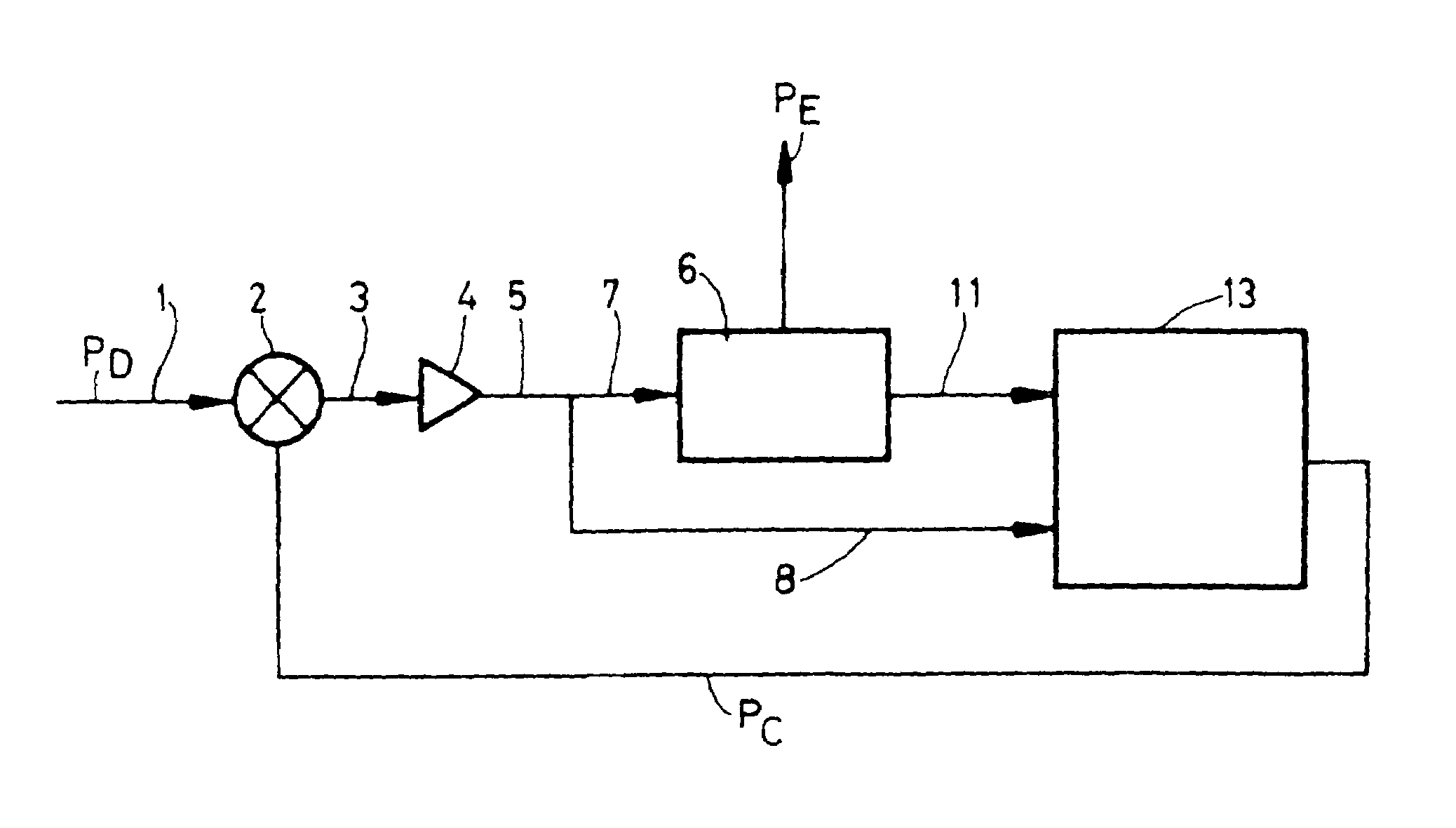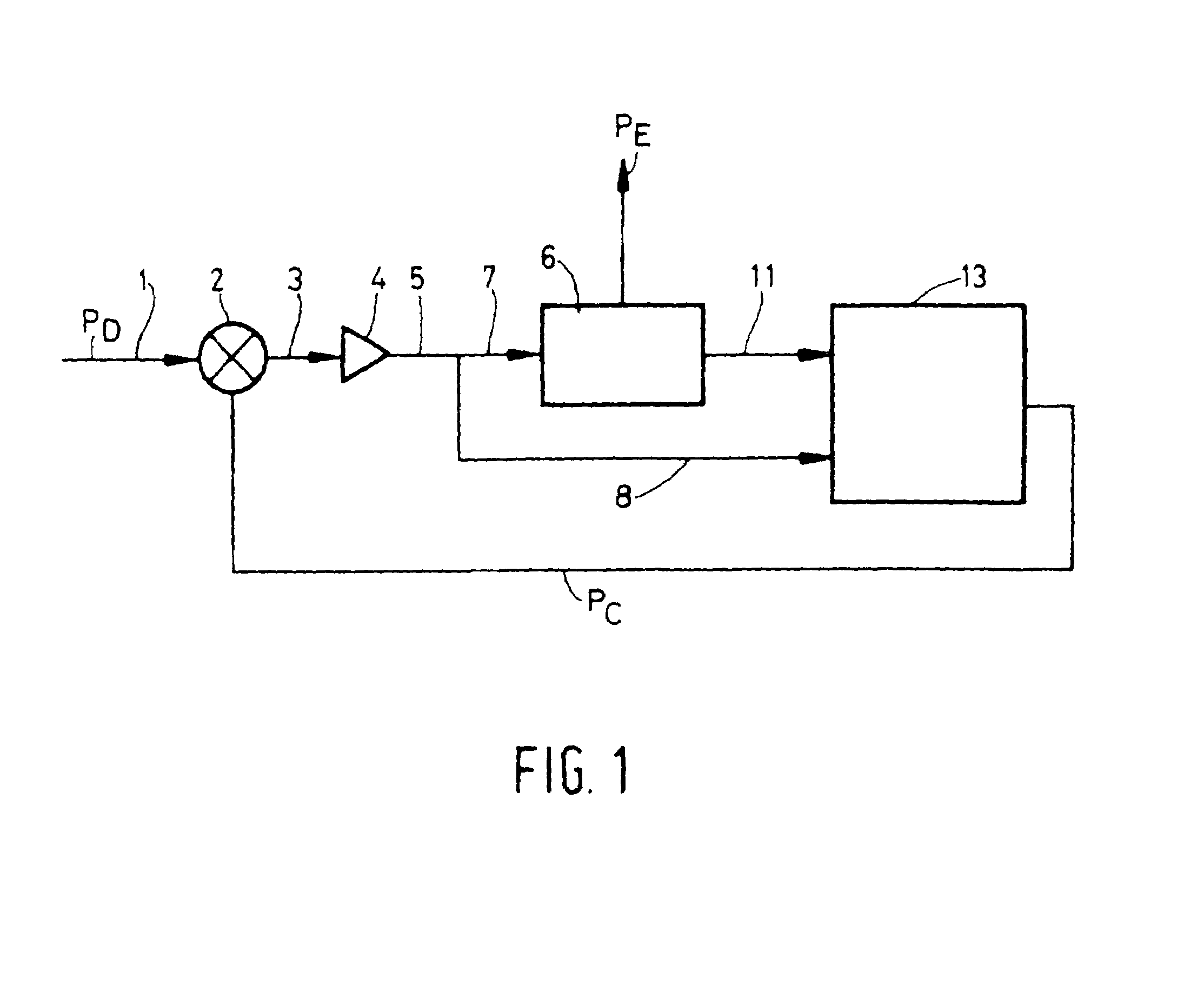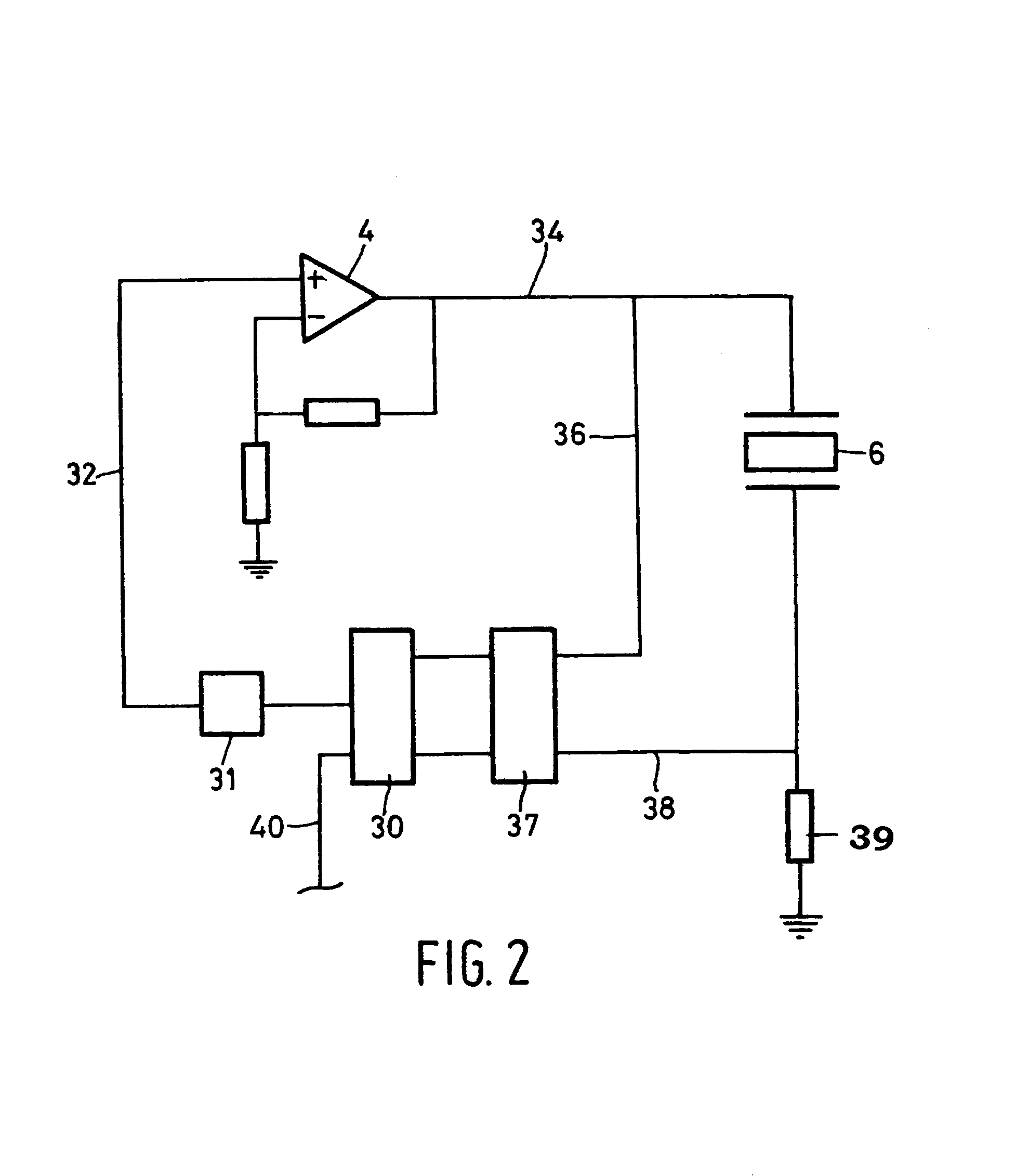Method of controlling an inkjet printhead, an inkjet printhead suitable for use of said method, and an inkjet printer comprising said printhead
a technology of inkjet printing and inkjet printer, which is applied in the direction of printing, other printing apparatus, etc., can solve the problems of reducing the print characteristic, slow change of material properties and particularly expansion characteristics of electromechanical transducers, and affecting the operation of the electromechanical transducer
- Summary
- Abstract
- Description
- Claims
- Application Information
AI Technical Summary
Benefits of technology
Problems solved by technology
Method used
Image
Examples
Embodiment Construction
[0030]FIG. 1 diagrammatically illustrates an example of the method according to the present invention. The method according to this embodiment starts from a desired pressure PD, indicated by reference 1, which is to be attained in an ink duct to generate a correct drop ejection. This desired pressure PD is the input signal to a subtracter 2. The desired pressure is translated into a signal 3 for an amplifier 4, which on the basis thereof will feed an actuation voltage 5 to a piezo-electric transducer 6. This voltage is fed to a port 7 of the transducer and, via a connection 8, to a unit 13. In response thereto, the transducer will undergo deformation and attain a pressure PE (effective pressure) in the relevant ink duct. This pressure cannot be measured directly. However, as a result of the pressure PE in the duct the transducer will undergo deformation and thus generate a current which is fed via a connection 11 to unit 13. Using the incoming signals the unit 13 can measure in real...
PUM
 Login to View More
Login to View More Abstract
Description
Claims
Application Information
 Login to View More
Login to View More - R&D
- Intellectual Property
- Life Sciences
- Materials
- Tech Scout
- Unparalleled Data Quality
- Higher Quality Content
- 60% Fewer Hallucinations
Browse by: Latest US Patents, China's latest patents, Technical Efficacy Thesaurus, Application Domain, Technology Topic, Popular Technical Reports.
© 2025 PatSnap. All rights reserved.Legal|Privacy policy|Modern Slavery Act Transparency Statement|Sitemap|About US| Contact US: help@patsnap.com



